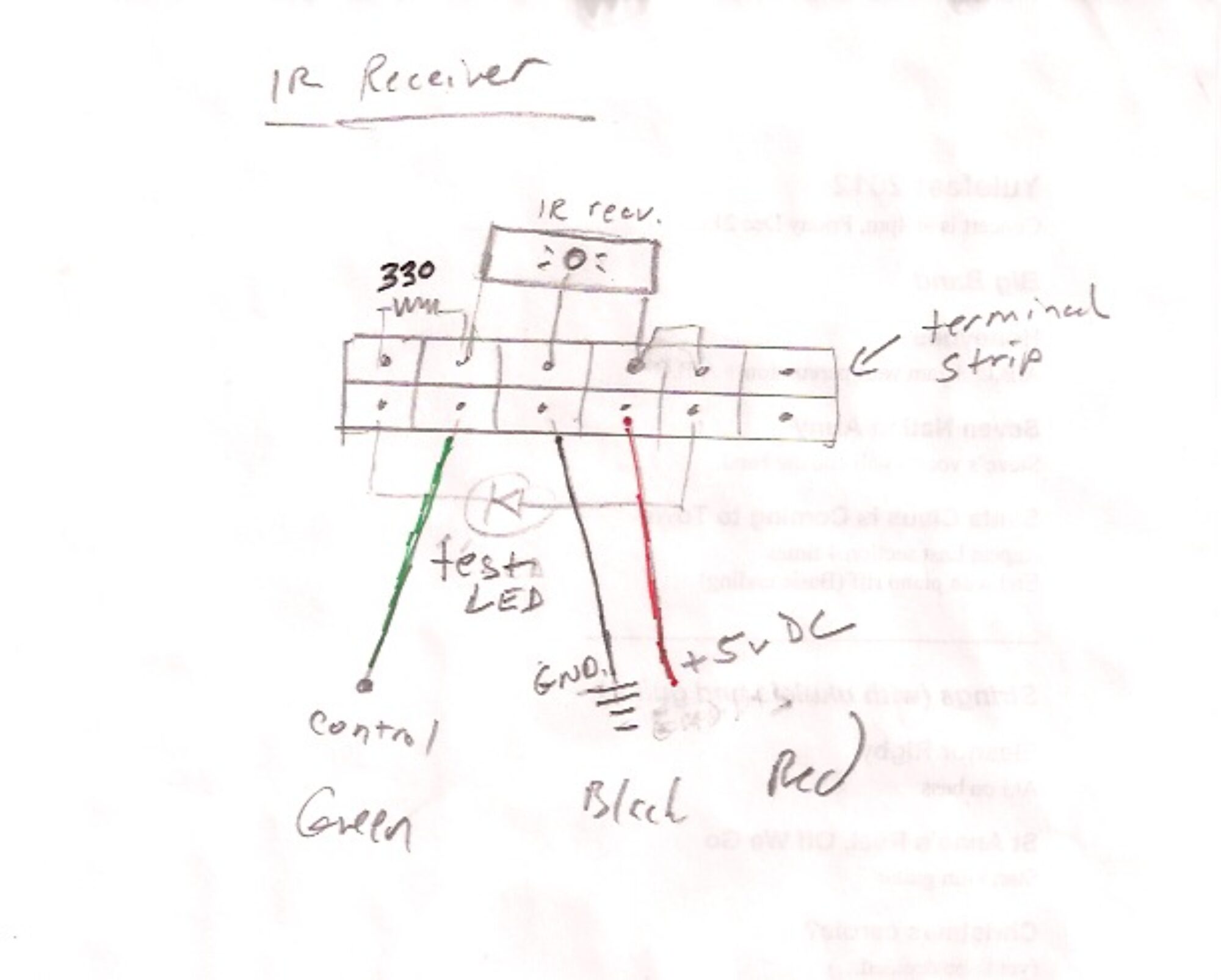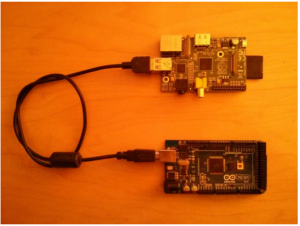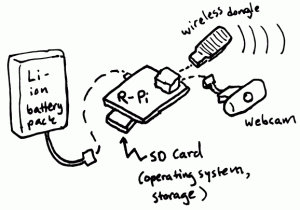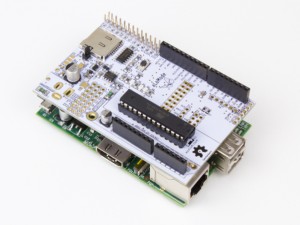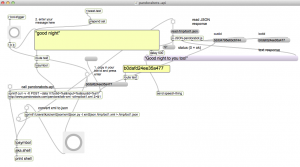Arduino and Osc
Spiderman
By The Ramones
http://youtu.be/BKIbSAmCYGo
Aerosmith Spider Man theme
Raspberry Pi in the Sky
R-Pi for aerial sensing.
By Kevino at Make
http://blog.makezine.com/2012/11/08/raspberry-pi-in-the-sky/?parent=RaspberryPi
AlaMode
Arduino-Compatible Shield for Raspberry Pi.
Raspberry Pi FM Transmitter
By Matt Richardson at Make Makazine
http://blog.makezine.com/2012/12/10/raspberry-pi-as-an-fm-transmitter/
What is data mining?
notes
A synopsis at UCLA
http://www.anderson.ucla.edu/faculty/jason.frand/teacher/technologies/palace/datamining.htm
MIT open courseware
http://ocw.mit.edu/courses/sloan-school-of-management/15-062-data-mining-spring-2003/index.htm
University of Texas
http://www.laits.utexas.edu/~anorman/BUS.FOR/course.mat/Alex/
CMU
Google oauth 2.0 authorization for devices
What this means: You create an app on a device which doesn’t have a browser. For example, an Arduino, an appliance, or a game console. This procedure shows how to authorize that device to access a user’s account for Google, Twitter, Facebook, etc.,
See this URL for Google instructions: https://developers.google.com/accounts/docs/OAuth2ForDevices
Notes and Google examples (using curl from a command line):
Here is an oauth 2.0 google request for a user code – The client id is obtained using instructions found at the link above.
curl -d "client_id=104588205543369.apps.googleusercontent.com&scope=https://www.googleapis.com/auth/userinfo.email https://www.googleapis.com/auth/userinfo.profile" https://accounts.google.com/o/oauth2/device/code
Which returned this JSON response:
{
"device_code" : "4/Gujc7GxpGFSHNlphxVZCK_y10yS6Kq",
"user_code" : "ibaz70ej9",
"verification_url" : "http://www.google.com/device",
"expires_in" : 1800,
"interval" : 5
}
Then you go to the URL in the response, enter the user code, and follow instructions…
Then from the device you do this…
curl -d "client_id=1045882053369.apps.googleusercontent.com&client_secret=zDP5UVwbqcYzv7rnVieKxnOV&code=4/Gujc7GxpGHNlphxVZCK_y10yS6Kq&grant_type=http://oauth.net/grant_type/device/1.0" https://accounts.google.com/o/oauth2/token
Which returns this response:
{
"access_token" : "ya29.AHES6ZE2QxqzZyWkGu20lJljEIHYTf08VtggyRF73428w0LQ7lzFP_uw",
"token_type" : "Bearer",
"expires_in" : 3600,
"id_token" : "eyJhbGciOiJSUzI1NiIsImtpZCI6ImJhZGQ4NWFhMmRlZmZkMWFkZWJkNzc2NTgxNWMzZmVjZTM0MmIzNGEifQ.eyJpc3MiOiJhY2NvdW50cy5nb29nbGUuY29tIiwiaWQiOiIxMTExNzg0MjgyNzI3MDgxMTI0NTMiLCJhdWQiOiIxMDQ1ODgyMDUzMzY5LmFwcHMuZ2df9vZ2xldXNlcmNvbnRlbnQuY29tIiwiY2lkIjoiMTA0NTg4MjA1MzM2OS5hcHBzLmdvb2dsZXVzZXJjb250ZW50LmNvbSIsInZlcmlmaWVkX2VtYWlsIjoidHJ1ZSIsInRva2VuX2hhc2gefiOiJvVG9OdS0tYU1DUGhYbUI1S3p4TTN3IiwiZW1haWwiOiJ6aWNhcmVsdEBnb3VsZGFjYWRlbXkub3JnIiwiaGQiOiJnb3VsZGFjYWRlbXkub3JnIiwiaWF0IjoxMzU2MjQ2Mjg2LCJleHAiOjEzNTYyNTAxODZ9.DqIqLtg9m6wlHh5YSFFgXIOgbMW0E2mKR2FdY7PWtNJrt91moqVBe7dQxQPNalQMKhYTapJdVk2MB1oRl7zXEnLIe_VjI3BUwzTKqaG_sS9oRyh14_yqDWeMFru5d7OFUm1Ulwb2lLdWWwtttEVyJiw94oBdR0tuWg0MNkEOkXU",
"refresh_token" : "1/NuEmigydABgeRwZaRCZbZZckJ-EJFZd8C1YZLURut8s"
}
Now your device can use the access token query string method…
curl https://www.googleapis.com/oauth2/v1/userinfo?access_token=ya29.AHES6ZQxqzZyWkGu20lJljEIHYTf08VtggyRF73428w0LQ7lzFP_uw
Here is the response:
{
"id": "1111784282727081812453",
"email": "[email protected]",
"verified_email": true,
"name": "Tony Tiger",
"given_name": "Tony",
"family_name": "Tiger",
"hd": "looney.org"
}
Or you can use the http header option…
curl -H "Authorization: Bearer ya29.AHKKES6ZQxqzZyWkGu20lJljEIHYTf08VtggyRF73428w0LQ7lzFP_uw" https://www.googleapis.com/oauth2/v1/user info
which should return the exact same response.
[Also see] tkzic/max teaching examples/google-oauth2.0-readme.txt
Merriam Webster API
Dictionary and Thesaurus.
Get a developer API key from here: http://www.dictionaryapi.com
example of a request to the Thesaurus API
curl http://www.dictionaryapi.com/api/v1/references/thesaurus/xml/cheese?key=ee2466d2-07a0-40af-b959-abcdeb125f0ca
Here’s the XML response – filled with synonyms:
<?xml version="1.0" encoding="utf-8" ?> <entry_list version="1.0"> <entry id="cheese"><term><hw>cheese</hw></term><fl>noun</fl><sens><mc>that which is of low quality or worth</mc><vi>you wouldn't believe the <it>cheese</it> that the movie studio puts out</vi><syn>cheese, crapola [<it>slang</it>], dreck (<it>also</it> drek), muck, rubbish, sleaze, slop, slush, trash, tripe</syn><rel>camp, kitsch; claptrap, humbug, nonsense; bomb, clinker, clunker, dud, lemon, stinker, turkey; mess, muddle, shambles</rel></sens></entry> <entry id="big cheese"><term><hw>big cheese</hw></term><fl>noun</fl><sens><mc>one of high position or importance within a group</mc><vi>thinks he's a <it>big cheese</it> just because he's got a business card</vi><syn>big, big boy, big cheese, bigfoot, biggie, big gun, big leaguer, big-timer, big wheel, bigwig, fat cat, heavy, heavy hitter, heavyweight, high-muck-a-muck (<it>or</it> high-muckety-muck), honcho, kahuna, kingfish, kingpin, major leaguer, muckety-muck (<it>also</it> muck-a-muck <it>or</it> mucky-muck), nabob, nawab, nibs, nob [<it>chiefly British</it>], pooh-bah (<it>also</it> poo-bah), wheel</syn><rel>baron, czar (<it>also</it> tsar <it>or</it> tzar), king, lion, magnate, mogul, prince, tycoon; VIP</rel><near>inferior, subordinate, underling; mediocrity, obscurity</near><ant>lightweight, nobody, nonentity, nothing, shrimp, twerp, whippersnapper, zero, zilch</ant></sens></entry> </entry_list>
Conversation with a robot in Max
This project brings together several examples of API programming with Max. The pandorabots.api patch contains an example of using curl to generate an XML response file, then converts XML to JSON using a Python script. The resulting JSON file is read into Max and parsed using the [js] object.
Here is an audio recording of my conversation (using Max) with a text chatbot named ‘Chomsky’
My voice gets recorded by Max then converted to text by the Google speech-api.
The text is passed to the Pandorabots API. The chatbot response gets spoken by the aka.speech external which uses the Mac OS built-in text-to-speech system.
Note: The above recording was processed with a ‘silence truncate’ effect because there were 3-5 second delays between responses. In realtime it has the feel of the Houston/Apollo dialogs.
pandorabots-api.maxpat (which handles chatbot responses) gets text input from speech-to-google-text-api2.maxpat – a patch that converts speech to text using the Google speech-API.
https://reactivemusic.net/?p=4690
The output (responses from chatbot) get sent to twitter-search-to-speech2.maxpat which “speaks” using the Mac OS text-to-speech program using the aka.speech external.
files
Max
- speech-to-google-text-api2.maxpat
- JSON-google-speech.js
- pandorabots-api.maxpat
- JSON-pandorabot.js
- text-to-speech2.maxpat
externals:
- [aka.speech] and [aka.shell] from http://www.iamas.ac.jp/~aka/max/ – download this external and add the folder to Options | File Preferences, in Max
[authorization]
- none required
external programs:
- sox: sox audio conversion program must be in the computer’s executable file path, ie., /usr/bin – or you can rewrite the [sprintf] input to [aka.shell] with the actual path. Get sox from: http://sox.sourceforge.net
- xml2json (python) in tkzic/internetsensors/: xml2json/xml2json.py and xml2json/setup.py (for translating XML to JSON) – [NOTE] you will need to change the path in the [sprintf] object in pandorabots.api to point to the folder containing this python script.
instructions
- Open the three Max patches.
- speech-to-google-text-api2.maxpat
- pandorabots-api.maxpat
- text-to-speech2.maxpat
- Clear the custid in the pandorabots-api patch
- Start audio in the Google speech patch. Then toggle the mic button and say something.
- After the first response, go to the pandorabots-api patch and click the new custid – so that the chatbot retains the thread of the conversation.
download:
The files for this project can be downloaded from the intenet-sensors archive at github
